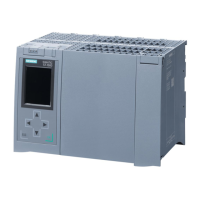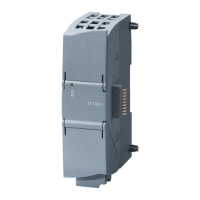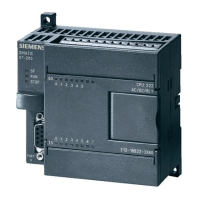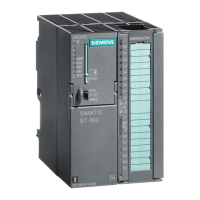Commissioning
12.4 Operating and system states
S7-1500R/H redundant system
408 System Manual, 01/2024, A5E41814787-AF
⑥SYNCUP → RUN-Redundant, RUN-Syncup → RUN-Redundant
transition
The redundant system switches from SYNCUP to the RUN-Redundant system
state if SYNCUP has successfully run.
In the RUN-Redundant system state, the two CPUs execute the user program
synchronously.
Note: A temporary increase in the cycle time can occur upon a system
state transition SYNCUP → RUN-Redundant. Configure a sufficiently long
maximum cycle time for the CPUs.
sition does not have
any effect on data.
Communication con-
nections (HMI, PG/PC)
on the backup CPU
become available.
Both CPUs process the
user program synchro-
nously.
Operating state
transitions
RUN-Syncup → RUN-Redundant
The primary CPU switches from the RUN-Syncup operating state to the RUN-
Redundant operating state if SYNCUP has successfully run.
The backup CPU switches from the SYNCUP operating state to the RUN-
Redundant operating state if SYNCUP has successfully run.
Central modules on the rail of the backup CPU server are only put into opera-
tion after reaching RUN-Redundant. If loaded, the corresponding OBs (e.g.
⑦RUN-Redundant → RUN-Solo, RUN-Redundant → RUN
transition
The redundant system switches from the RUN-Redundant system state to the
RUN-Solo system state (loss of redundancy) if:
• You POWER OFF one of the CPUs.
or
• A CPU detects an error which prevents further work.
or
• The cycle time was exceeded once, see section Events and OBs (Page 323)
or
• You set one of the CPUs to STOP with the PG/PC, the display, the RH_CTRL
instruction (Mode 8/9) or the mode selector.
The primary CPU switches to RUN or the backup CPU becomes the primary
sition does not have
any effect on the data.
Operating state
transition
RUN-Redundant → RUN
The primary CPU switches from the RUN-Redundant operating state to the
RUN operating state and continues to execute the user program.
This operating state
transition does not
have any effect on

